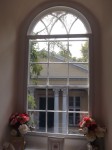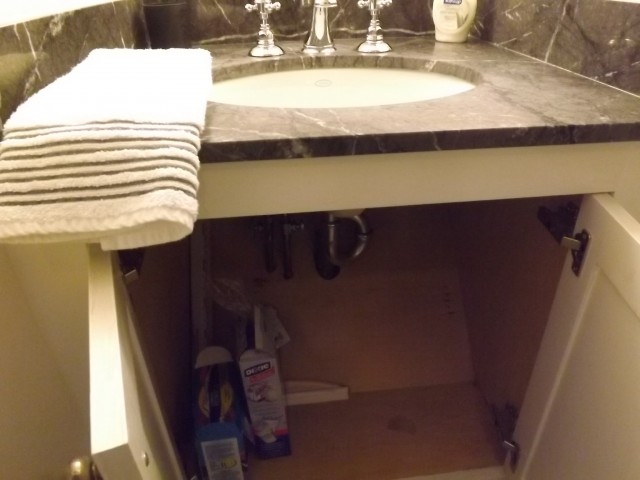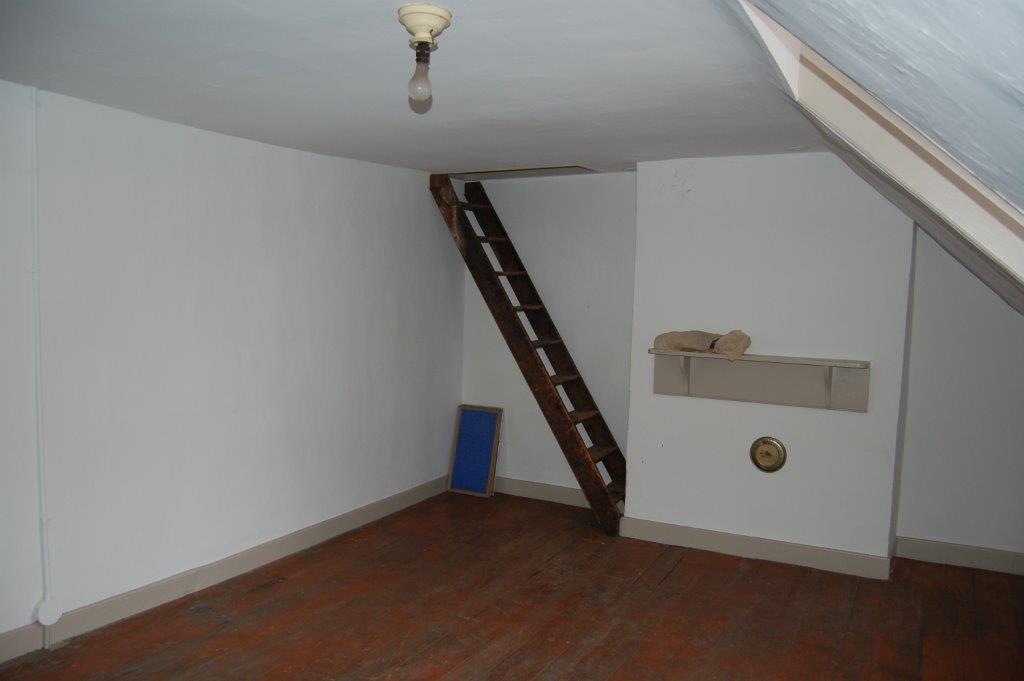Now on the Market: A Flag Stop on the Underground Railroad
Every structure has a story behind it, no matter how humble. But some have more fascinating stories than others. We found one with a great story on the market in Society Hill.
415 Pine Street is a handsome four-story Colonial directly across from Old Pine Street Church (the church is seen through the house’s window, at left). There’s a reason why.
The house was built in 1795 by James Moyes and his wife Mary Tatum Moyes, who purchased the lot in 1787. James, who owned several buildings on the next block, was a sailmaker and ropemaker for the American forces during the Revolution. The Moyses were Quakers and ardent foes of slavery, which is why they bought the lot across from Old Pine: In addition to building a house for themselves, they used it to stash slaves fleeing to freedom.
 A tunnel in the house’s basement connects the home to the church (seen, left, through the window of the home) across Pine Street, which was a center of abolitionist activity in the 19th century. Slaves headed north on the Underground Railroad were sheltered in a hidden rear bedroom on the house’s fourth floor, accessible only via a concealed set of stairs. Should slave hunters come prowling, the fugitives could use a ladder in the fourth-floor front bedroom to reach a trap door to the roof and flee across the rooftops of neighboring houses.
A tunnel in the house’s basement connects the home to the church (seen, left, through the window of the home) across Pine Street, which was a center of abolitionist activity in the 19th century. Slaves headed north on the Underground Railroad were sheltered in a hidden rear bedroom on the house’s fourth floor, accessible only via a concealed set of stairs. Should slave hunters come prowling, the fugitives could use a ladder in the fourth-floor front bedroom to reach a trap door to the roof and flee across the rooftops of neighboring houses.
Renovations from the 1960s onward removed some remnants of that history, most notably the ladder and trap door in that fourth-floor bedroom. But others remain visible if you know where to find them.
The floor of that secret staircase, for instance, can be found hidden beneath a vanity in a half-bath on the third floor landing that was installed by the house’s current owners. (That hiding place it led to now hides the home’s climate-control equipment.)
More visible links to the home’s history can be found just inside the front door, where what appear to be two framed paintings flank the entrance hall. These are actually murals painted by slaves who fled the Mississippi Delta and depict scenes of the land they left.
Or so the listing agent, Belynda Stewart of Coldwell Banker Preferred Avenue of the Arts, believes. She bases this on both the landscapes in the murals and an item in Mary Moyes’ will. Moyes, who inherited her husband’s property on his death, left the Pine Street property to friends of the family in trust for the benefit of one Sarah Clement Sting, subject to the provision that she pay $100 a year for five years after her death to the American Home Mission Society for “promoting the spread of the Gospel in the valley of the Mississippi.”
The home’s original rooms have been restored to look much as they might have in the 1800s, including custom brass chandeliers and marble fireplaces – most likely the work not only of the current owner but a previous owner who spent most of his years restoring the house and left permanent mementoes of his time there in the windows in the stairwell between the second and third floors.
One of the home’s more distinctive original features is a butterfly staircase leading from the first to the second floor.
The bathrooms and kitchen are thoroughly up to date, and there’s a sunny skylit den and rear patio in the back of the first floor as well.
THE FINE PRINT
Beds: 5
Baths: 3 full, 2 half
Square feet: 4,118
Price: $2,150,000
Listing: 415 Pine Street [CBP]







